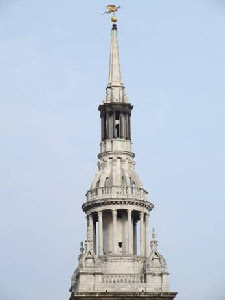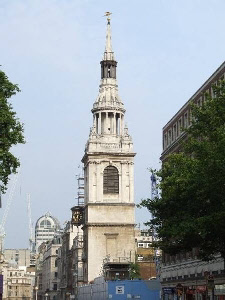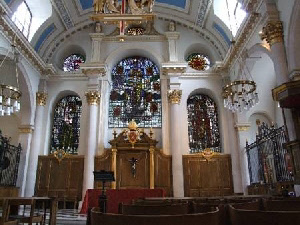When I was a kid, St Mary le Bow WAS London. We would crowd around the radio (yes, really) in my home town of Rotorua, New Zealand, at dinnertime, 6pm, and we would hear a peal of bells that gave us goosebumps and a calm, carefully modulated male voice would say “From the BBC World Service, this is London calling.” Then would follow the news.
“That’s the sound of the Bow Bells,” said Dad. “My elder brother, Fred, was born in Islington, and he could hear those bells, so he is a true London cockney – born within the sound of the Bow Bells.” I met Uncle Fred several times and he was indeed a cockney. In past times, when there was no roar of London traffic, and the buildings weren’t so tall, you could hear the Bow Bells all the way out to the Hackney Marshes, but in the end it’s the accent that counts and Uncle Fred certainly had it.
The Whitechapel Bell Foundry in London, which made the bells for the Wren church, told me the church was set alight by nearby burning buildings on 11 May 1941. The tower was badly damaged and the bells crashed down, breaking all twelve of them. It took until 1961 for the bells to be restored to their original position and rung again, the new bells being cast from the metal of the old.
No doubt you are familiar with the strange little poem “Oranges and Lemons”; the line “I do not know, said the great bell of Bow,” refers to St Mary le Bow. In Medieval times the bell was rung for the nine o’clock curfew – which probably also meant closing the gate on London Bridge to prevent further traffic to and from the markets of Bankside.
There was a Saxon church on this site in Cheapside, but it was build over by the Normans and the crypt, which dates from 1080, is a sign of how anxious they were to assert their superiority over the Londoners of the time. The spire on the Norman church was a well-known landmark and when the church was destroyed in the Great Fire of 1666, Wren replaced it with this most distinctive spire, which you can see from here. The great bell (number 12) is still called Bow.
The body of the church was completely destroyed in the blitz but Wren’s beautiful masterpiece, the tower, had survived and the church as we see it now was rebuilt in new stone, whilst many of the old stones were recycled in the new building and some of the memorials were able to be restored to niches in the walls.



